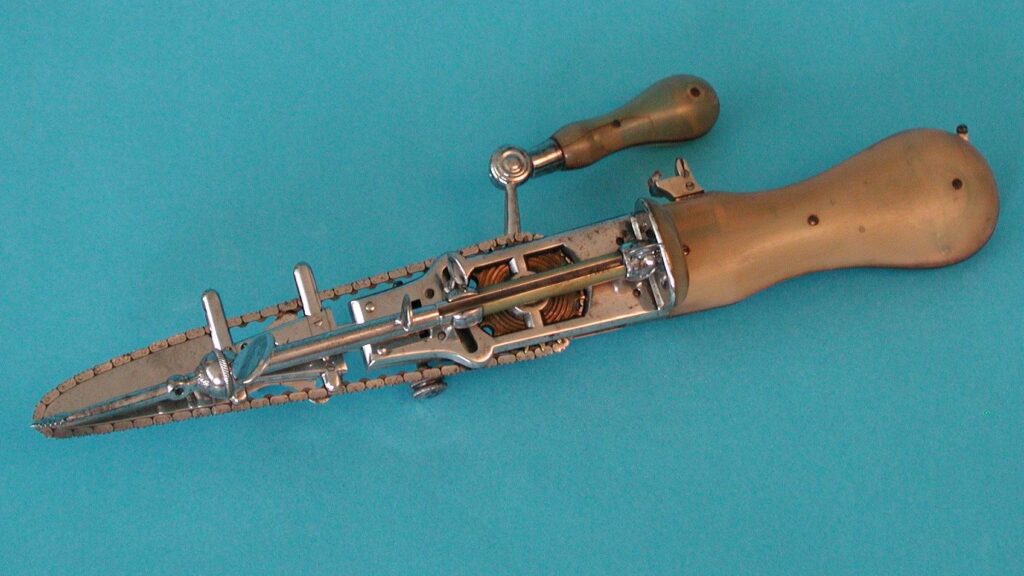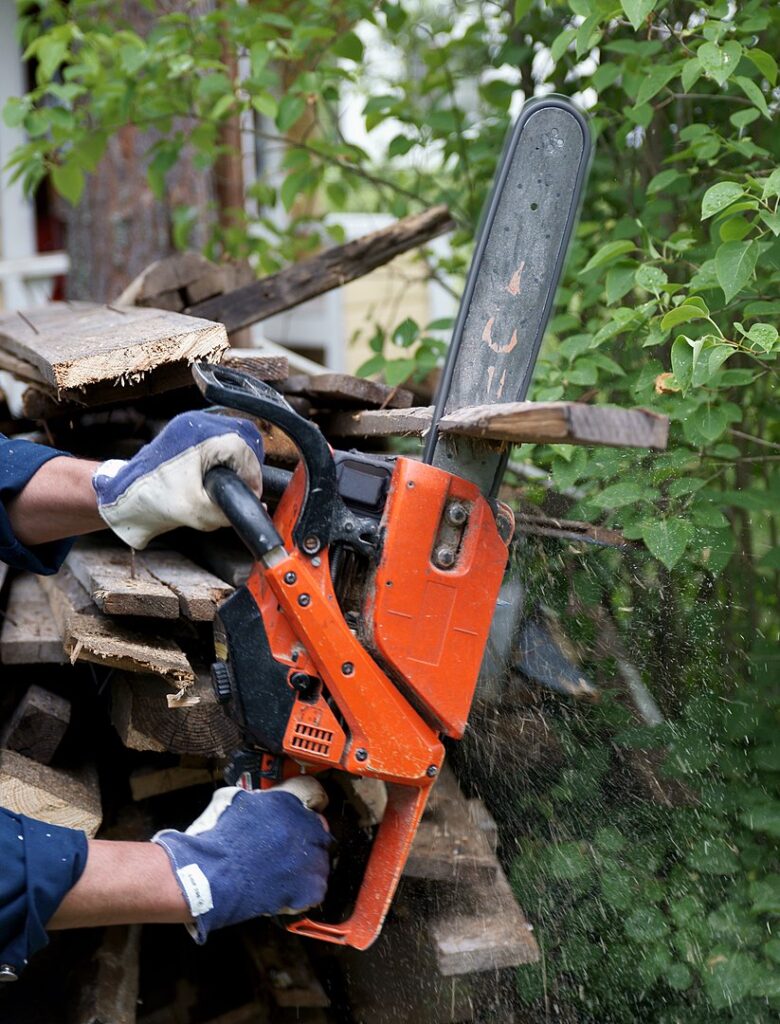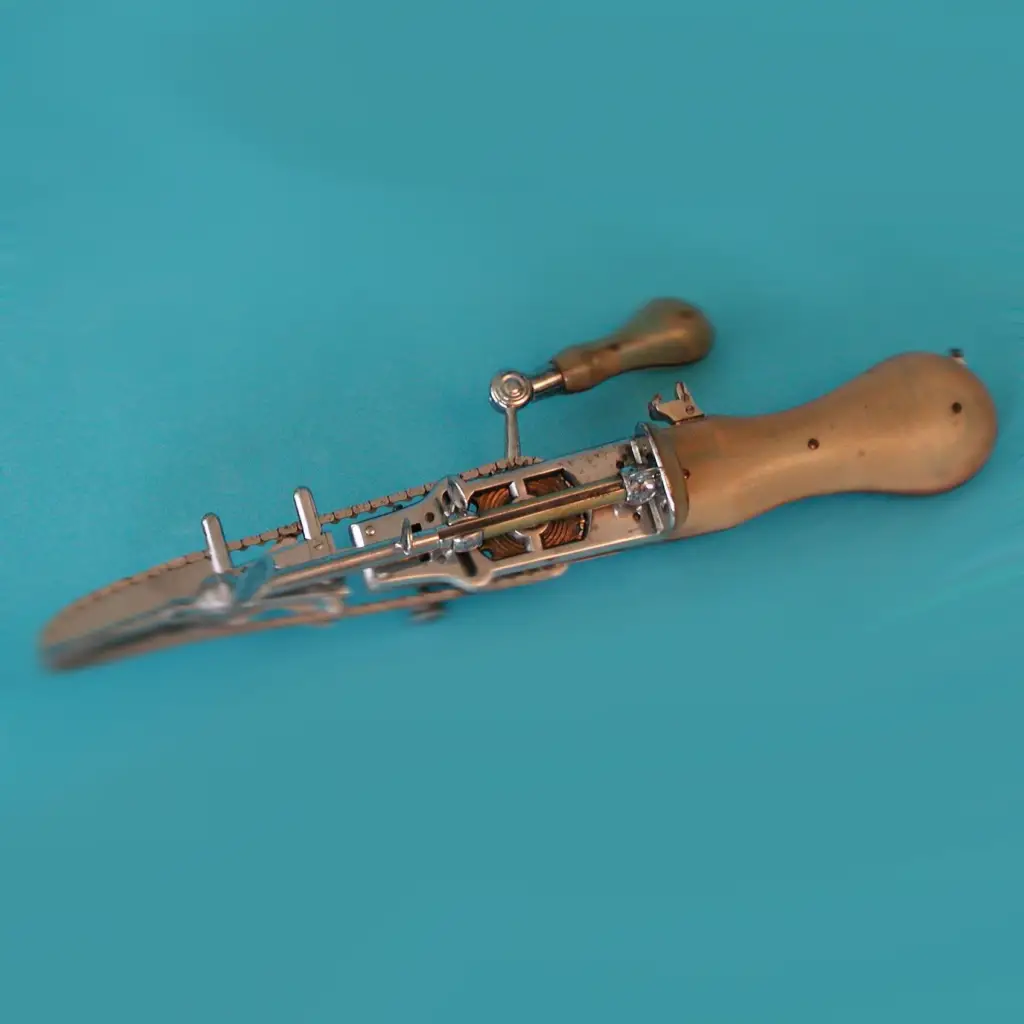
Chainsaws have become an essential tool for various industries and homeowners alike. From forestry to landscaping, they serve a multitude of purposes. But have you ever wondered about their origin? The chainsaw’s history is an intriguing and unsettling tale, filled with surprising turns.
Let’s dive deeper into the chainsaw’s dark past, its evolution, and the versatile tool we know today.
Challenges of Childbirth Through History
Childbirth has always been fraught with risks and complications. Just a few hundred years ago, maternal deaths per 100,000 live births were around 600 to 1200, implying countless women and babies have faced life-threatening situations during the birthing process. Compare that to the modern age, where the US rate is roughly 20-30 maternal deaths per 100,000, which is still far too high of a number, but drastically shorter.
Why’s that?
Modern medicine, of course.
The Cesarean Section in Ancient Times

In the Roman era, the high risk of a mother dying during childbirth led to the implementation of a law. This law mandated physicians to perform a risky procedure known as a “Cesarean” on dead or dying mothers to save the baby. The procedure got its name from Emperor Caesar, who was believed to have enacted this law. During a Cesarean section, a physician would cut open the dying mother’s abdomen and remove the infant.
For centuries, Cesarean sections were seen as a last resort since it was improbable that both mother and child would survive the procedure. As a result, the baby’s life was prioritized over the mother’s.
The Possibility of Saving Both Lives
Rumors began to circulate that Cesarean sections could save both mother and child. In 1500, a Swiss veterinarian reportedly saved his wife and child through a successful C-section. However, many people remained skeptical of this claim.
As the 19th century approached, medical advancements, such as improved hygiene, increased the likelihood of saving both mother and child during a Cesarean section. However, in a time before anesthetics or antibiotics, this abdominal surgery was still extremely painful and dangerous.
One of the primary challenges was the surgical method itself. Physicians had to tear into the woman’s uterus by hand or use scissors to perform the operation. Both methods were slow and often insufficient in alleviating the mother’s pain or saving the baby’s life.
The Horrors of the Past: Dr. John Richmond’s Story
In the same year that the medical chainsaw was invented, Dr. John Richmond shared a harrowing account of a failed Cesarean section. After hours of labor, his patient was nearing death. With limited surgical instruments, Dr. Richmond attempted a Cesarean section using a pair of scissors.
Unfortunately, the baby could not be removed due to its large size and the mother’s substantial weight. Amid the mother’s excruciating screams, Dr. Richmond declared the baby dead and proceeded to remove it piece by piece. Miraculously, the woman survived after weeks of recovery.
Dr. Richmond’s terrifying tale highlights the urgent need for a more humane alternative to the Cesarean section, ultimately leading to the invention of the chainsaw as a medical instrument.
Symphysiotomy and the Birth of Chainsaws
Believe it or not, chainsaws were initially invented for a medical purpose – to aid in childbirth. In the late 18th century, Scottish doctors John Aitken and James Jeffray devised a new surgical procedure called symphysiotomy. This procedure involved cutting the mother’s pelvis to widen the birth canal and facilitate vaginal delivery.
Aitken and Jeffray realized that a sharp knife wasn’t fast and painless enough for this surgery. They needed a more efficient tool, which led to the invention of the first chainsaw. Unlike the modern chainsaws we know today, the original chainsaw resembled a small serrated knife attached to a hand crank. While it did speed up the process, it was still dangerous and ultimately fell out of favor.
The Chain Osteotome and its Applications
In the early 19th century, German inventor Bernhard Heine developed the chain osteotome, a direct ancestor of the modern chainsaw. Heine’s invention was designed for orthopedic surgery, and it featured a chain with guards to protect the surrounding tissue. This allowed surgeons to cut through bones without causing splinters or damaging soft tissues.
The chain osteotome was a significant improvement over previous bone-cutting tools. It was widely used for various surgeries, including amputations, and gained popularity across the world. However, the chainsaw’s true potential was yet to be discovered.
Samuel J. Bens and the Birth of Modern Chainsaws

In 1905, Samuel J. Bens filed a patent for the first recognizably modern chainsaw. He realized that chainsaws were not only useful for bone cutting but could also make quick work of cutting down trees. This marked the beginning of the chainsaw’s transformation from a medical instrument to an indispensable tool in forestry and logging.
The early chainsaws used in forestry were bulky, heavy, and required two people to operate. Despite their size and weight, they significantly improved the efficiency of logging operations. The ability to fell trees quickly and easily marked the beginning of a new era for the chainsaw.
Throughout the 20th century, chainsaws underwent numerous improvements. Innovations in materials, engine technology, and design made them lighter, more portable, and easier to use. By the mid-20th century, chainsaws were widely adopted by professionals and homeowners alike, revolutionizing tree-cutting and yard maintenance tasks.
Conclusion
The history of chainsaws is both intriguing and unsettling. From their gruesome origins in medical procedures to their evolution into a versatile tool for forestry, landscaping, and art, chainsaws have come a long way. As technology continues to advance, we can expect further innovations and improvements in chainsaw design, safety, and sustainability.
The chainsaw’s story is far from over, and it will undoubtedly continue to shape our world in ways we can’t yet imagine.





